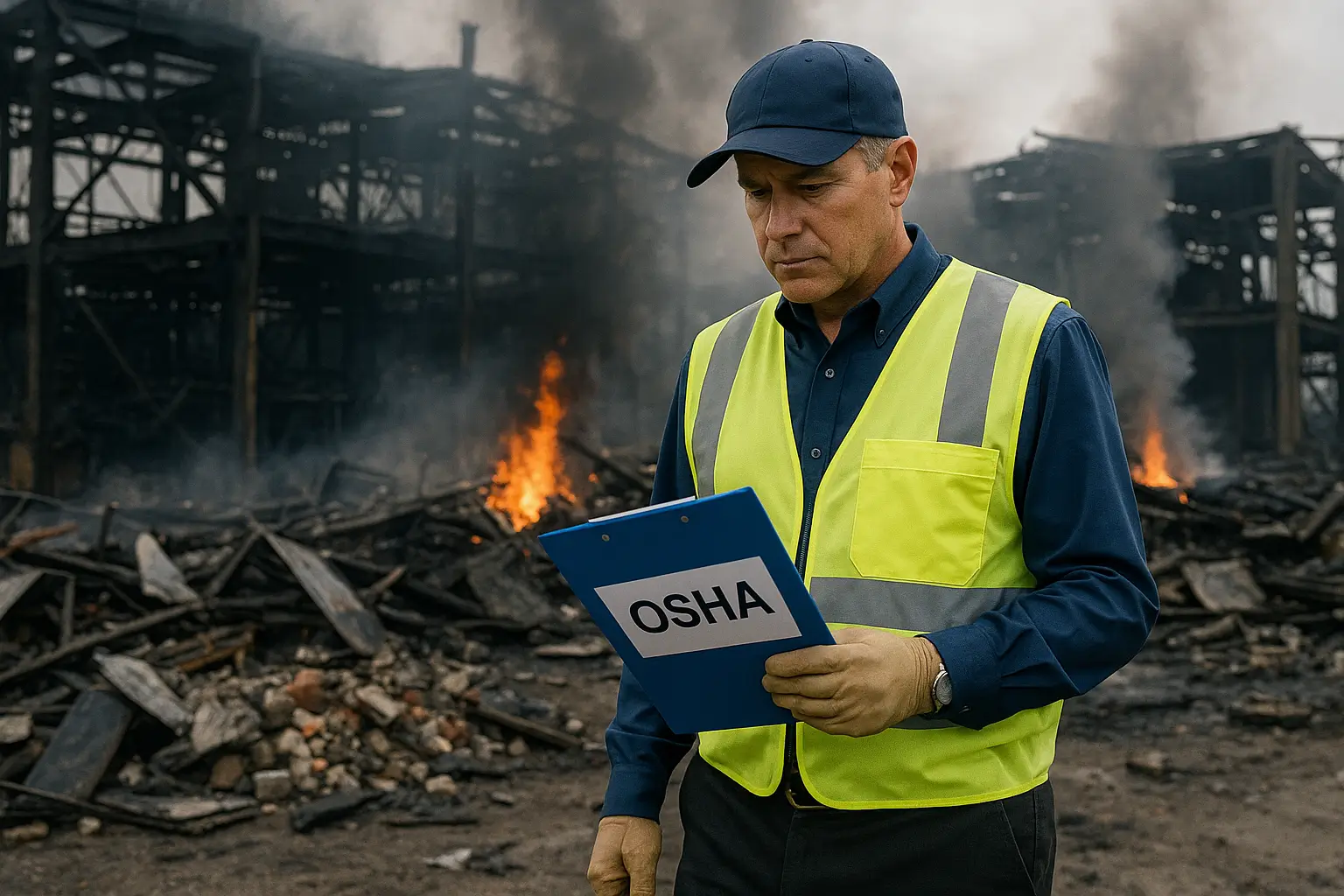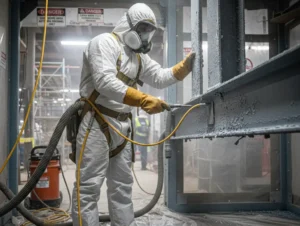OSHA fines are more than just financial penalties; they stand as stark reminders of the devastating cost of neglecting workplace safety.
Behind every record-breaking fine lies a tragedy that exposed systemic failures, preventable hazards, and the real human toll of unsafe practices.
Over time, these incidents have pushed industries to adopt stricter regulations, enhance employee protections, and strengthen corporate responsibility.
This article revisits some of the biggest OSHA fines in history, exploring the lessons learned and how they reshaped the landscape of occupational safety.
OSHA’s Authority and How Penalties Work
Under the Occupational Safety and Health Act of 1970, OSHA (the Occupational Safety and Health Administration) was granted the authority to enforce workplace safety standards across nearly every industry in the United States.
When employers fail to comply with these regulations, OSHA can issue citations and impose financial penalties as a means to drive accountability and prevent future harm.
The amount of each fine depends on several key factors: the severity of the hazard, the number of violations identified, and whether the infraction is deemed “serious,” “willful,” or “repeated.” Willful or repeated violations, especially those showing disregard for employee safety, can result in some of the highest penalties OSHA is authorized to impose.
Record-breaking fines are not issued lightly. They typically follow catastrophic events such as explosions, chemical leaks, or structural failures that cause multiple fatalities or severe injuries.
These incidents often reveal deeper systemic problems within a company’s safety culture, prompting OSHA to issue heavy penalties that serve both as punishment and as a nationwide warning to other employers.
Historical Cases that Redefined Safety Accountability
The most significant OSHA fines in history are more than records of financial loss; they mark defining moments when the cost of neglecting safety became impossible to ignore.
Each case that follows represents a tragedy that reshaped how the United States approaches workplace safety, influencing not just individual companies but entire industries.
From refinery explosions to chemical plant disasters, these incidents revealed critical gaps in safety protocols, hazard communication, and management accountability.
In response, they spurred legislative reforms, tighter process safety standards, and more rigorous oversight of contractors and maintenance operations.
These landmark events became catalysts for OSHA to strengthen its enforcement strategies and for companies nationwide to recognize that compliance alone is not enough; a genuine safety culture must be built on prevention, transparency, and continuous improvement.
Case Studies: The Costliest OSHA Fines in History
Each of the following cases demonstrates how catastrophic safety failures can lead to devastating human, environmental, and financial consequences.
These record-breaking OSHA fines are not just numbers; they tell the story of preventable tragedies that transformed workplace safety culture in America.
By examining these incidents, we see how neglected hazards, insufficient oversight, and weak safety systems led to disasters that changed regulations and corporate accountability forever.
These case studies serve as reminders that real safety begins long before OSHA’s involvement, through proactive prevention, strong leadership, and continuous worker protection efforts.
Imperial Sugar Explosion (2008)
In February 2008, a catastrophic dust explosion ripped through Imperial Sugar’s refinery in Port Wentworth, Georgia, killing 14 workers and injuring dozens more.
The blast was fueled by accumulated combustible sugar dust, a known hazard long ignored in industrial settings.
OSHA’s $8.7 million fine was one of the largest of its time, uncovering systemic negligence in housekeeping and hazard prevention. The tragedy prompted national awareness of dust explosion risks and led to stronger enforcement and guidance on combustible dust control standards.
Kleen Energy Explosion (2010)
The Kleen Energy Systems natural gas plant in Middletown, Connecticut, exploded during commissioning in February 2010, killing six workers and injuring 50.
The explosion occurred when workers purged natural gas lines without proper venting, allowing an ignition source to trigger a devastating blast.
OSHA imposed a $16.6 million fine, highlighting a lack of safety oversight and flawed startup procedures.
This case drove the creation of stricter protocols for gas venting operations and power plant construction, emphasizing the need for thorough risk assessments before system startups.
IMC Fertilizer Blast (1991)
At the IMC Fertilizer and Angus Chemical plant in Sterlington, Louisiana, a massive explosion in 1991 killed eight workers and injured more than 120. The cause was traced to a runaway chemical reaction involving nitric acid and hydrocarbons; an entirely preventable process failure.
OSHA’s resulting fine, exceeding $11 million, underscored the importance of comprehensive process safety management (PSM). This disaster became a key factor in OSHA’s formal adoption of the PSM standard, requiring chemical plants to better identify, evaluate, and control process hazards.
BP Texas City Refinery Explosion (2005)
One of the deadliest industrial accidents in U.S. history occurred at BP’s Texas City refinery in March 2005, when a vapor cloud ignited during a unit startup, killing 15 workers and injuring 170. Investigations revealed deep-rooted cost-cutting, ignored maintenance issues, and a toxic safety culture.
OSHA levied a $21.3 million fine, the largest in its history at that time, later followed by additional penalties for ongoing violations. This incident became a landmark example of how organizational complacency and profit pressures can erode safety systems.
BP Deepwater Horizon Disaster (2010)
The 2010 Deepwater Horizon explosion in the Gulf of Mexico remains one of the most devastating offshore disasters ever recorded. The rig explosion killed 11 workers and caused the largest marine oil spill in U.S. history. OSHA’s $87 million fine, the largest ever issued to a single company, reflected systemic failures in BP’s safety management and corporate oversight.
Beyond financial penalties, the disaster reshaped offshore drilling regulations, reinforcing the critical need for rigorous safety culture, process audits, and accountability at every level of operation.
Wrap Up
The largest OSHA fines in history remind us that safety failures don’t just cost money; they cost lives, livelihoods, and trust. Each catastrophic event pushed industries to confront systemic weaknesses and strengthen their safety cultures.
These penalties serve as powerful lessons that compliance isn’t merely a legal formality but a moral responsibility to protect workers. By learning from these past mistakes, employers today can prioritize prevention, invest in training, and build safer workplaces that never make headlines for the wrong reasons.






